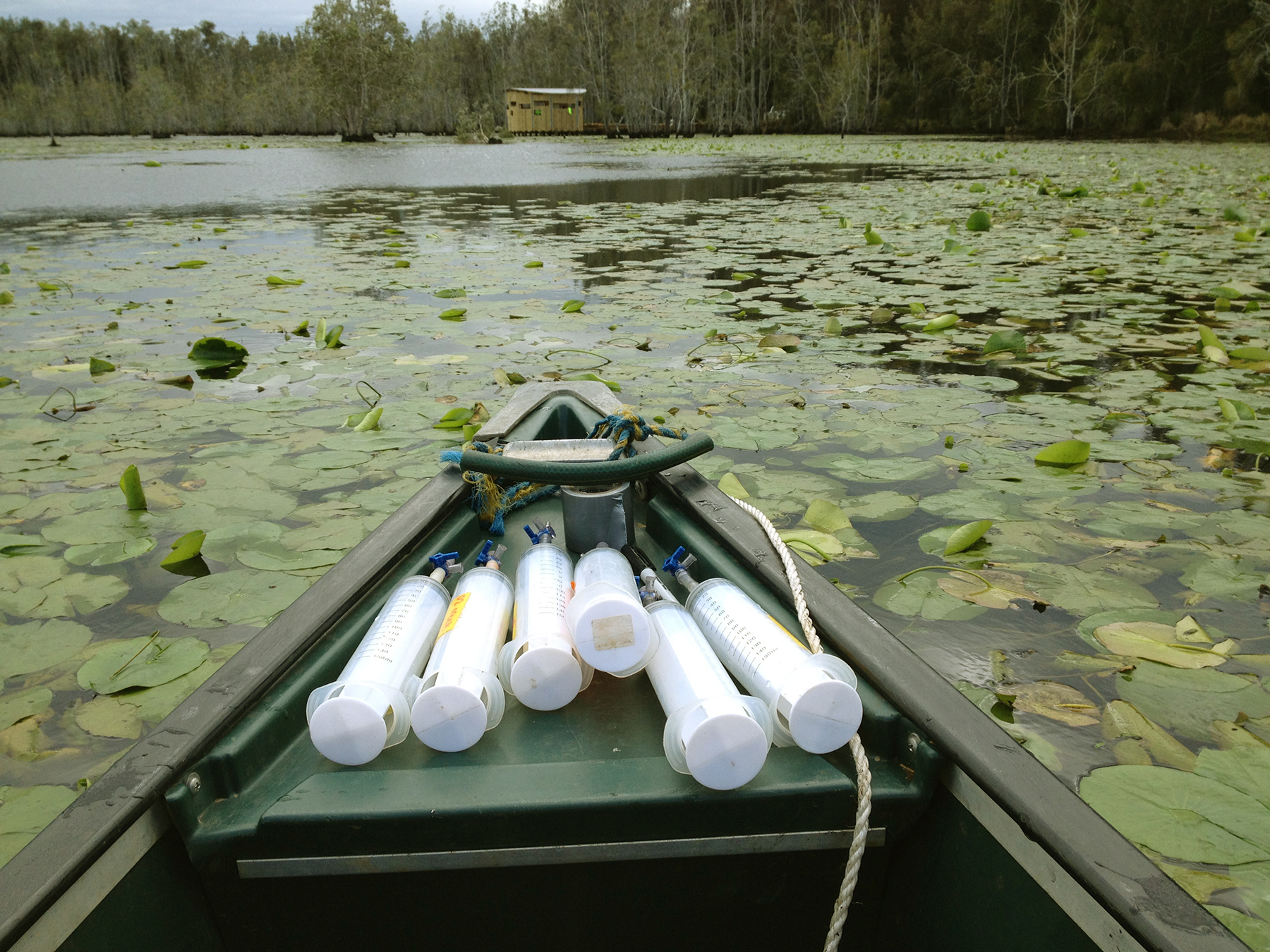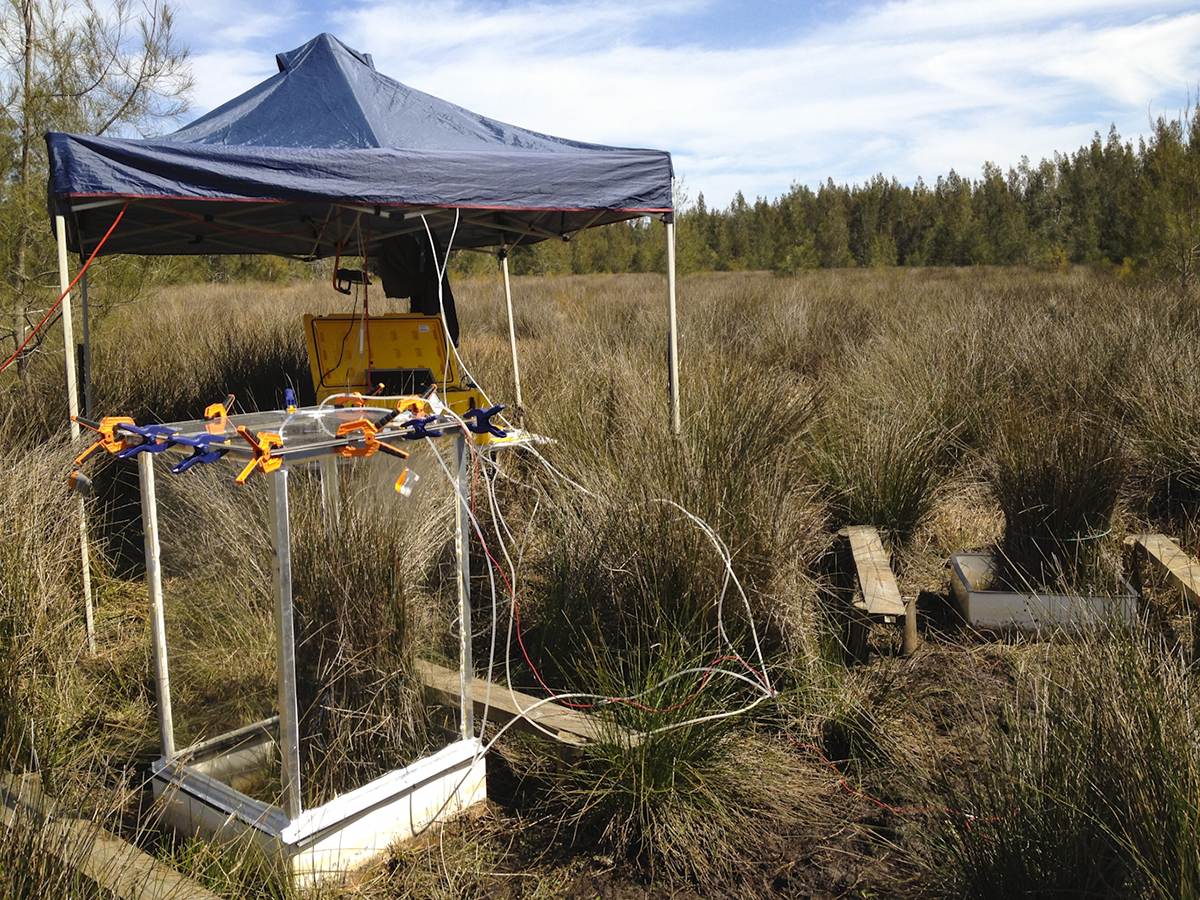We say farewell to “Tunga” Dr. Batsaikhan Bayartungalag, our Endeavour Scholar visiting from Mongolia working on groundwaterpollution. It was an honour to host you and look forward to further collaboration!
4th Annual Barefoot Biogeochemistry Camp.
Blending family and work life. Great weekend away at Nymboida Canoe Centre!
“What skills are required to get a PhD?"
Add plumbing and electrical work to the list. Check out happy barefoot PhD students Kay and Ash after conquering a beast named VINDTA with gentle hands, driven hearts, creative brains, and full support from coffee.
Getting into India
Isaac and Douglas just returned from a week in Kerala, India.
Isaac is advising on the creation of a national network project on submarine groundwater discharge by colleagues from the National Centre for Earth Science Studies and other >20 Indian institutions.
The crew performed initial investigations in beaches, mangroves, and enjoyed the local food and hospitality. They also trained Indian colleagues on some of the SGD techniques.
Further collaborative research is planned for the near future with the exchange of students and research tools.
Rarotonga (Cook Islands) field work.
From the 1st to the 10th of February a small barefoot team consisting of Phd candidate Michael reading, IP student Kylie Maguire, Douglas Tait and Dirk Erler travelled to Rarotonga in the Cook Islands to investigate groundwater contribution to nutrient budgets and greenhouse gas emissions. The Lagoon has extensive eutrophication issues and as a result a coral to macro algae dominated phase shift is evident. The research will be used to identify potential mitigation measures as part of a larger international collaboration including both industry and other universities.
The team conducted time series sampling, spatial surveys and sediment incubations in the lagoon in addition to sampling creek surface water and groundwater at a range of monitoring wells adjacent to the lagoon. Radon and Radium isotopes were measured to quantify pore water exchange, fresh groundwater seepage and water residence time in the lagoon. Physiochemical parameters, nutrient and greenhouse gas levels were also measured in ground and surface waters and denitrification rates were measured in sediment using closed incubation chambers.
Michael Reading launching the pedal catamaran for a radon, nutrient and GHG spatial survey of the Muri Lagoon.
Dirk Erler installing sediment incubation chambers in the Muri Lagoon.
Kylie Maguire retrieving the last Radium soak sample.
Overall, a lot of fun was had over the 8 massive days (and nights) in the field. All objectives were met despite some equipment issues (que the sinking kayak) and local tv and newspaper interviews.
Big congratulations
Big congratulations to Jackie Webb, Mahmood Sadat-Noori and Marnie Atkins for finishing their PhD, and Luke Jeffrey for finishing his Honours degree. Luke and Jackie were given university medals for their Honours and PhD work – this is a very prestigious award reserved to only a few! The crew had a genuine barefoot celebration after removing fancy gowns - party at Lake Ainsworth with muddy kids, good swimming, and a typical Australian summer dinner – fresh prawns on the beach!
Congrats to Mahmood, Marnie and Jackie for finishing their PhD
Congrats also to Luke for formalizing his Honours degree.
Great time at Lake Ainsworth with the Barefoot family.
One Tree Island Fieldwork Trip
In November of 2017, members of Barefoot Biogeochemistry travelled to One Tree Island to investigate its coral reef metabolism and island groundwater effluent.
Pictured left to right: James Archibald, Brendan Kelaher, Tom Glaze, Emily Shaw, Dirk Erler, Ashly McMahon, Kay Davis, and Isaac Santos.
Researchers from three teams within Southern Cross University Lismore and National Marine Science Centre enjoying a sunset. Pictured left to right: James Archibald, Brendan Kelaher, Tom Glaze, Emily Shaw, Dirk Erler, Ashly McMahon, Kay Davis, and Isaac Santos.
Kay Davis recording benthic transects
The metabolism study investigated ecosystem calcification/dissolution and photosynthesis/respiration by measuring variations in reef water chemistry during low-tide periods when the lagoon is isolated from the oceanic zone. We can quantify our target parameters by analysing the water for changes in total alkalinity, pH, dissolved oxygen, and dissolved inorganic carbon. Comparing our results to previous studies will determine whether this island’s reef has changed its metabolic activity in the last 50 years, allowing us to understand how global and local stressors may have impacted the corals at One Tree Island.
We also quantified porewater exchange in the island’s lagoon using the radioactive isotope radon to investigate the influence of groundwater on local carbon, nutrient, phytoplankton, and CDOM dynamics. We had long days, strange hours, equipment malfunctions, health issues, and a shortage of food, but we also had a lot of fun!
Aerial view of time series station and Barefoot Biogeochemistry researchers to investigate groundwater effluent to lagoon. Left to right: a dancing Isaac Santos and laughing onlookers Kay Davis, James Archibald, Ashly McMahon.
ARC success - Douglas Tait, Damien Maher, Christian Sanders and Scott Johnston
The ARC has recognised early career researcher Dr Douglas Tait with a Discovery Early Career Researcher Award (DECRA) worth $392,650 for the project, ‘Is groundwater the missing nutrient source to the Great Barrier Reef?’ (DE180100535).
With the source of only 30% of the nutrient necessary to sustain life on the Great Barrier Reef the study aims to close this considerable knowledge gap.
Despite billions of dollars being spent on improving water quality in the Great Barrier Reef, nutrient budgets and the sources of pollution remain poorly quantified and instances of harmful algal blooms continue to rise. This project will focus on the discharge of groundwater to coastal waters which has been shown elsewhere to be a major component of coastal nutrient budgets.
Nutrients and pollutants can be stored in underground aquifers for decades before flowing to coastal waters. The project will use a combination of cutting edge technology and modelling to quantify how the legacy of past land use practices affects reef nutrient dynamics. It will provide land and marine managers with crucial information to safeguard this precious resource into the future.
For more information or how you can be involved contact Douglas Tait -douglas.tait@scu.edu.au
Chasing methane
By LUKE JEFFREY
Luke Jeffrey collecting methane ebullition samples.
Background: Wetlands are hotspots for biodiversity and are highly efficient at capturing carbon dioxide (greenhouse gas) from the atmosphere. Due to their waterlogging nature, these valuable ecosystems can efficiently bury and store this ‘captured carbon’ within their sediments and are generally considered net carbon sinks. Wetlands however, are also one of the largest natural sources of methane (a more potent greenhouse gas), therefore understanding the drivers and pathways for methane emissions are important for land use management and in relation to climate change.
Cattai wetland
Early morning bliss
In early September, the barefoot team returned a third time to Cattai Wetland, to capture ‘drying conditions’ as part of a seasonal PhD dataset and ARC linkage project. The fieldwork team consisted of Dr Douglas Tait, Prof. Scott Johnson, Roz Hagan, volunteer and upcoming IP student; Kylie Macguire and PhD candidate Luke Jeffrey.
Our green house gas research station (also a bird hide)
Camp Cattai
This study will look at changes in seasonal freshwater wetland hydrology and vegetation ecotypes, and how these relate to methane emissions to the atmosphere. This will be coupled with a companion study looking at carbon burial rates, to overall assess the carbon sink/ source behaviour of adjacent remediated wetland sites (Cattai Wetland, NSW).
Dark chamber fluxes from freshwater lake
To account for diurnal variability of methane and carbon dioxide emissions, the recent fieldwork involved 24 hour continuous sampling of simultaneous vegetation ecotypes (at three ‘periodically inundated’ vegetated areas) as well as the drivers such as soil moisture, soil redox, temperature and sunlight.
Phragmites vegetation flux chamber
Measuring soil redox conditions with geoscience team
At the same time we also measured diurnal aquatic carbon dioxide and methane emissions from the adjacent lake (a ‘permanently inundated’ freshwater wetland site) and accounted for both diffusive emissions (water to air), vegetation (lilies) and ebullition (methane bubble).
Methane ebullition bubble catchers ready for deployment
Luke Jeffrey collecting methane ebullition samples
Picarro set up at site A amongst the casuarina forest
three simultaneous piccaro time series stations
Kylie recording the ebullition concentration and isotopes at the fieldlab
Compared to the previous flooded and mosquito plagued conditions of April 17, we encountered rather pleasant 4 degree nights and 30+ degree days, with a small dose of rain and gale force winds during the pack down, as nature reminded us who was boss! A massive thank you to all fieldworkers (Scott, Roz, Doug and Kylie) and lab and equipment preparation involved (Ceylena and Paul), and also Bob from Mid Coast Council for logistics and Matt Damon (aka ‘The Martian’) for inspiration, as the trip, sampling, camp fire songs and return to Earth went as smoothly and as efficiently as possible.
Juncus vegetation flux chamber and picarro timeseries station
Is it sweet for the reef?
By Dr Douglas Tait
A small team of Barefoot Biogeochem’ers recently toured the lower Burdekin riverine area surrounding Ayr in North Queensland, sampling groundwater under cane fields. Collecting samples to analyse for nutrient, metal and pesticide concentrations as well as sampling for tritium, radon and radium to determine the age and movement of the water.
Understanding the impacts of this highly modified and managed landscape on groundwater will be important for predicting effects on the nearby Great Barrier Reef. Early results point to improvements in modern farming methods with lower nutrient concentrations in groundwater close to the surface but historical high use of nitrogen fertilizers is clearly detectable in deeper wells.
Well maintained wells, friendly farmers and a relaxed community atmosphere made the week of sampling in Australia’s sugar capital a smooth and enjoyable experience. The research will be part of an honours project looking at the age and chemical load of the groundwater in the lower Burdekin region as well as ongoing further research into groundwater movement into the reef via shallow and deep submarine ground water discharge and paleo channels.






















































